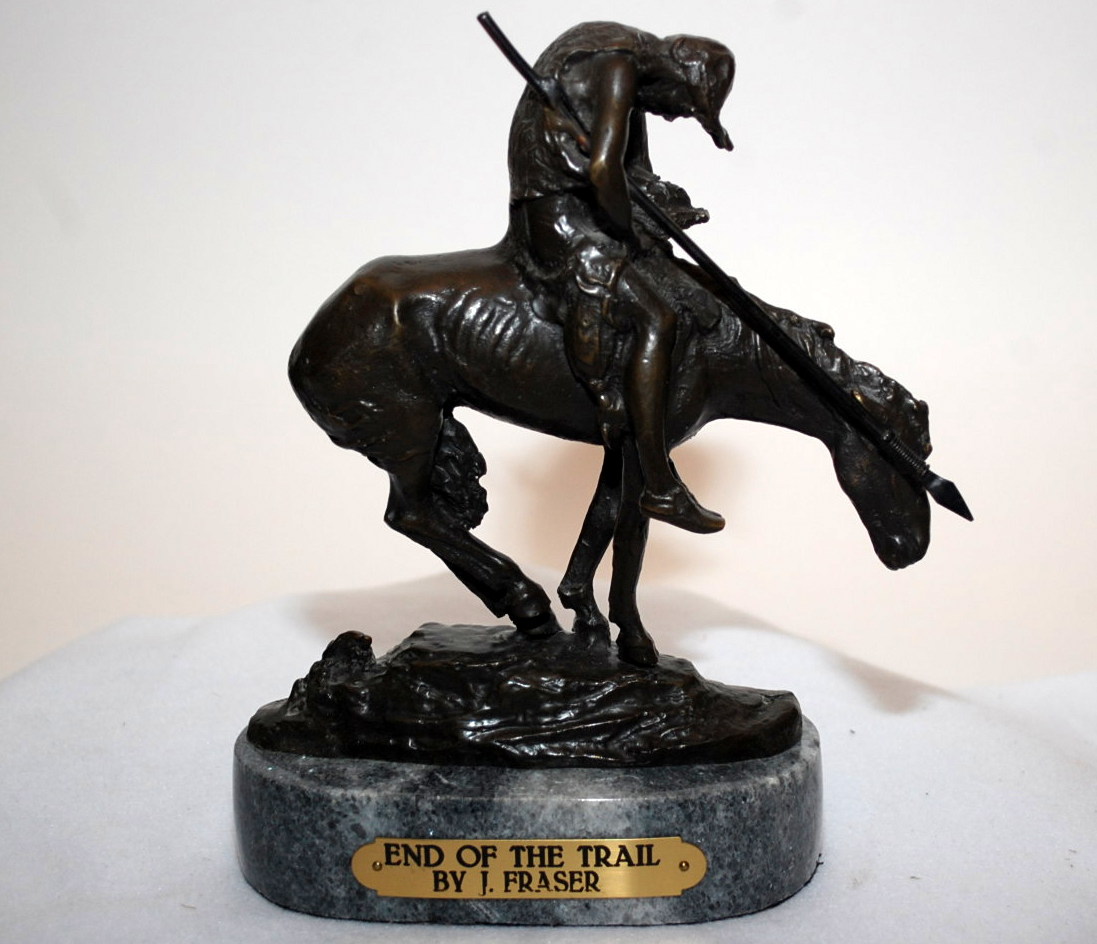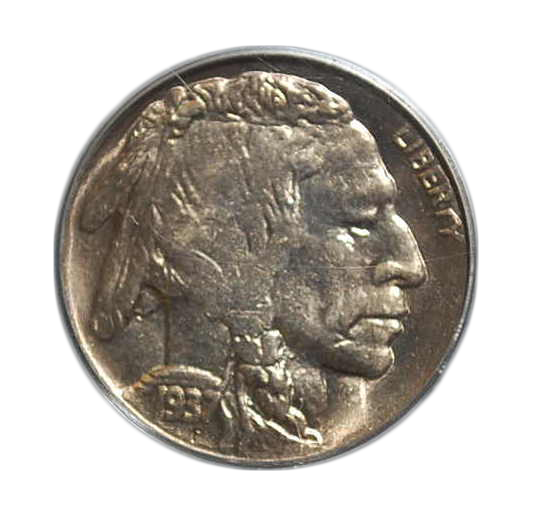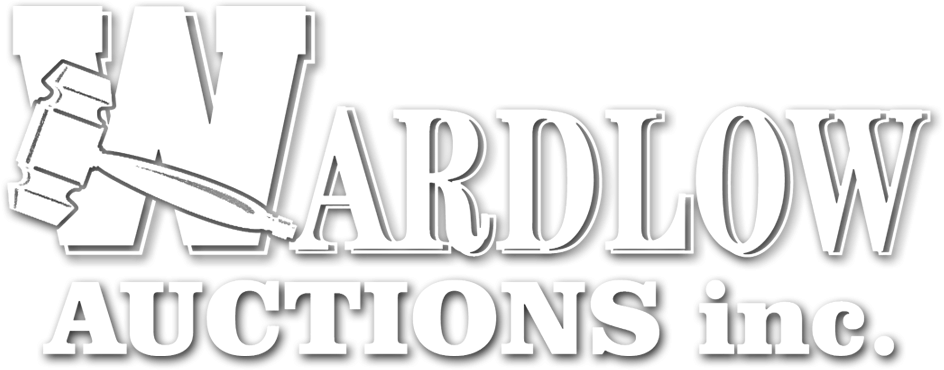The Indian Head (aka Buffalo) Nickel

Over the years we have successfully conducted several coin auctions for various individuals and collectors. In some cases, there is an interesting story behind the particular coin. Here’s a brief story about the Indian Head (or Buffalo) nickel.
The Indian Head nickel was first issued in 1913 and was made through 1938. It came about when President Theodore Roosevelt decided he wanted to “upgrade” the nation’s coinage. He called upon his friend, sculptor James Earl Frazier, to design the coin. Fraser grew up in South Dakota and thus had ties with the Great Plains Indian tribes. Fraser had already gained acclaim for his well-known sculpture of “End of the Trail”. (see photo). Frazer called upon three Indians to model for the obverse side of the coin. One was Two Moons (a Cheyenne) and another was Iron Tall (a Sioux). Frazer could not recall the name of the third Indian. As a result, this opened the door for several enterprising Indians or their advocates to take or be given credit for being the third model. Among them were Chief John Big Tree (Seneca), Chief Two Guns White Calf (Blackfoot), and Adoeette “Big Tree” (Kiowa). Despite all of the research to ascertain the identity of the third Indian, it was never clearly determined and thus the disagreement still exists. Frazier’s position was that it was not important since the design was a composite of all three Indians and not a direct portrait of any single one.
On the reverse side of the nickel is a buffalo – and it has a name. It is Black Diamond. Black Diamond was a resident at the Bronx Zoo (or the Central Park Zoo, depending on what you hear or read) and served as the model for Fraser’s buffalo. The initial coinage showed the bison on a raised mound bearing the denomination “FIVE CENTS” underneath. However, this design (known as Variety 1) lasted less than a year as the denomination wore off quickly. So in 1913 it was redesigned to show a straight line of ground to better recess the wording “FIVE CENTS”. This design is known as Variety 2 and continued until 1938. The story doesn’t end there - not surprisingly. A little more than a decade after Black Diamond’s death in 1915, coin collectors were told that another buffalo, by the name of Bronx was the model for the coin. (So, much like today’s media, it seems that the facts and representation of those facts tend to vary depending on how a person wants to interpret them and use them to sway influence to accomplish their objectives).
What to look for in Indian Head (or Buffalo) nickels.

There are numerous things that can affect a coin’s value. Among them are: the level of detail of the engraving, the number of coins minted in a particular year or at a particular mint, minting errors, rarity and scarcity, and the level of circulation. For example:
- In general, for most years the “D” and “S” (Denver and San Francisco) mint Indian Head nickels are more valuable than the Philadelphia minted coins because substantially fewer Indian Head nickels were minted at the Denver and San Francisco mint.
- The 1913-D&S (Variety 2) coins are especially more valuable than the 1913-P and 1913 Variety 1 of all mints.
- Some of the 1937-D nickels show a 3 legged buffalo instead of a 4 legged buffalo. The 1937-D, 3 legged buffalo nickel is worth about 450 times the value of any other 1937 nickel. Also, if the buffalo on the 1936-D coin has only 3 ½ legs, that coin is worth about 400 times the value of the other 1936 nickels.
- Other Indian Head nickels such as the 1914, 1916, 1918-D, and 1935 may have stamping errors which can increase their value significantly.
And for Pete’s sake, if you find a coin that fits the above description, do not drill a hole in it to make a charm, necklace, or key chain or you can kiss the value of the coin goodbye.
-Rick Wardlow, Auctioneer




